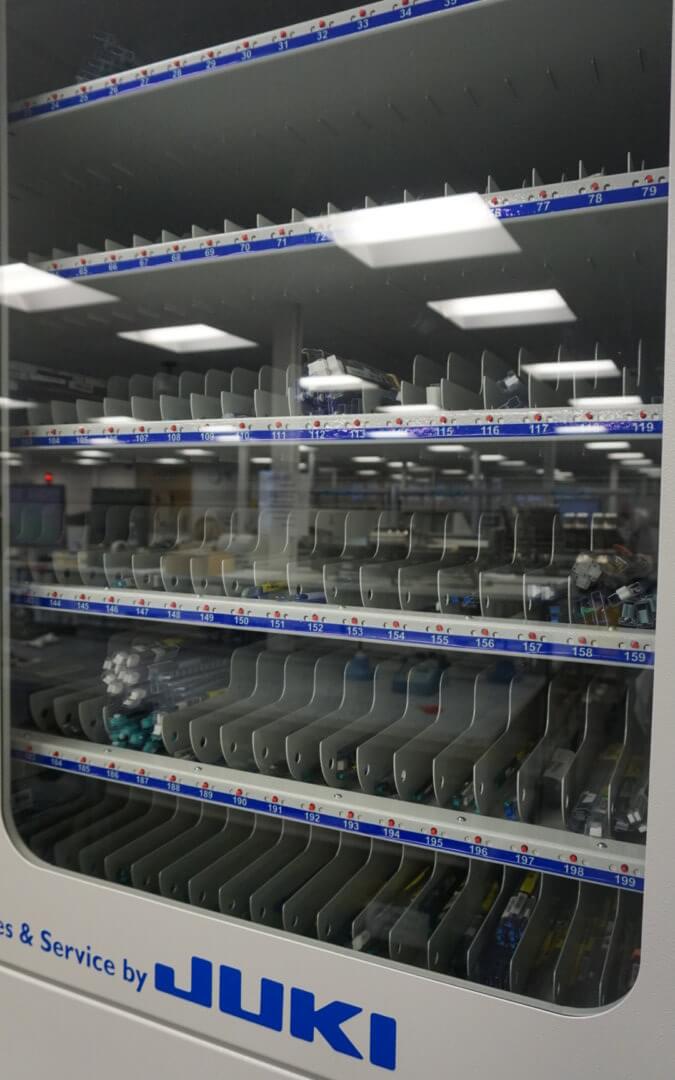Box-building is typically used to paraphrase the challenging stage of bringing together the many components within a single, ready-to-go product. This idea of simply connecting up various elements to create a box of tricks remains one of the EMS industry’s most understated descriptions. It remains a highly complex manufacturing process where the expertise and facilities of your EMS partner makes a big difference to your final product. Most importantly, this expertise begins before the box is even designed…
The term ‘systems integration’ provides a more meaningful description of how Chemigraphic brings together custom PCB assembly with sub-assemblies and modules, enclosure design, fabrication, cabling and wiring. We transform these elements into complex, multi-tier systems – often sophisticated machines – and make ready through testing, software, programming and calibration.
Below are some key considerations regarding the systems integrations process.
PCB assembly should be a core offering
By offering PCB assembly (PCBA) using both Surface Mount Technologies (SMT) alongside conventional Pin-Through-Hole (PTH), it’s possible to check and guarantee the quality of components within the system. We are the only UK EMS to use automated JUKI SMT kitting machines and the automation allows us to build to specification, removing the opportunities for human error and reducing labour costs. We have unrivalled component management systems which allow us to place components in the most detailed configurations, meaning we can assist customers with any project, no matter how complex.
Think about the box build early on
Enclosures and casings are essential components of System Integrations – plastic and metal, or combinations. There are many off-the-shelf choices available, often with the advantage of lower unit prices and small minimum orders, but rarely this is without sacrifice – it won’t be unique, the components may not fit correctly, and there’s always the possibility a supplier might modify or withdraw the product. The need to fit PCBs securely alongside other electronics, modules, wiring and fans often drives our customers towards bespoke enclosures.
Since plastics and polymers are most commonly used it’s critical that an EMS supplier understands the differences between materials and manufacturing techniques. For instance, ABS is only suited to indoor environments as it will be compromised by prolonged exposure to sunlight, whereas ASA+PC resists high temperatures and harsh environments. New techniques such as MS-MMM injection moulding can incorporate soft-touch textures and colour, which avoids the use of different suppliers. It’s the job of an EMS provider to pass on this knowledge as customer benefits in the form of shorter, more reliable supply chains and economies of scale.
Chemigraphic also incorporates any metalwork using only carefully vetted suppliers of precision-fabricated materials. Coatings may be necessary to protect both the casing and components against the weather, corrosion, conductive or toxic dust particles, water and general contamination. In these instances we use automated equipment to apply protective coatings to selected board locations, increasing efficiency and reducing both the opportunity for human error and labour costs.
Don’t get in a tangle with wiring
The complexity of cable and wiring can vary enormously between System Integration projects, from a few wires stripped, twisted and tinned to complex harnesses with more than a 1000 ends and a multitude of terminations. Most projects require customised wiring – lengths, colours, special pin-outs, identification, connectors, etc. Our automated cable ‘cut and strip’ machines can accommodate low-volume complex harnesses through to medium-volume cable assemblies. Via our Shenzhen office, we can source and co-ordinate the entire supply chain with certifiable traceability.
Off-the-shelf still requires customisation
Many customers choose to make use of widely available Commercial Off-The Shelf (COTS) modules – boards and mezzanines, controllers, HMIs and displays, power supplies, etc. Development costs and timelines can be reduced using pre-tested sub-assemblies, but should be balanced against higher unit costs and possible compromises on functionality. We’ve found the most successful system integration projects take a hybrid approach, using both COTS and custom-builds to best fit the customer’s immediate and future requirements. It is rarely true that by purchasing a COTS product, no bespoke work will need to be performed. Chemigraphic has a wealth of experience integrating and combining COTS modules into larger systems. We use our Asian sourcing office to gain attractively-priced components.
Take extra care with moving parts
Electro-mechanical assemblies containing switches, electronic controls, gears, rollers, etc, contain moving parts and are inherently more challenging. Conflict with other parts especially from different manufacturers are routinely discovered. Chemigraphic has knowledgeable, specialised purchasers who are in touch with the global components markets. We use CAD 3D modelling equipment to improve the design process and have a well-equipped inspection area containing microscopes and electrical testing devices.












